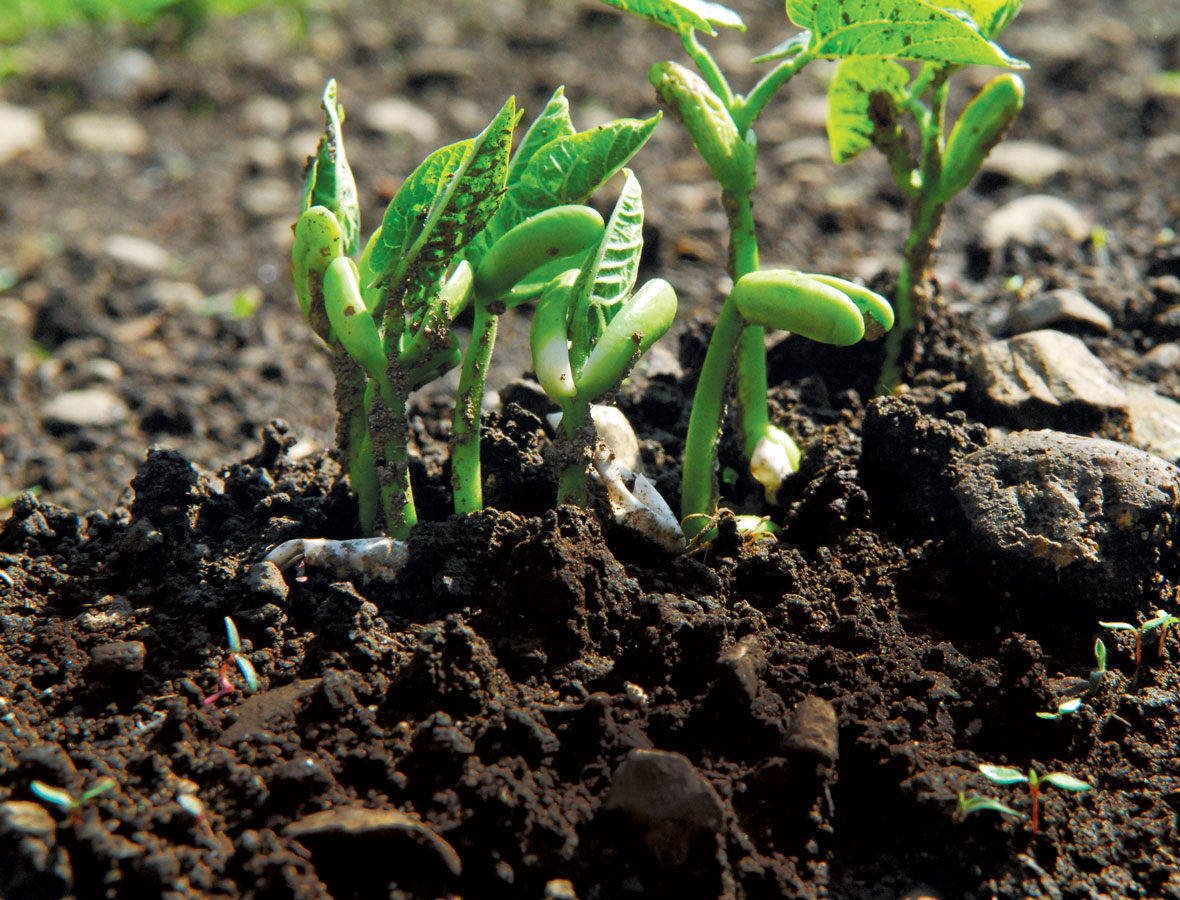Community Seeds
It’s easy to take seeds for granted. They’re small, relatively inexpensive, and readily available. But talk with a seed saver, and you’ll gain a new perspective. They’ll not only tell you about the amazing potential of one tiny tomato seed to grow three feet and produce pounds of delicious fruits, but they’ll also tell you of the stories and culture they hold. And, they’ll urge you to join in a global movement to “save our seeds” to help sustain the planet’s biological diversity and its food supply.
Edible Columbus recently spoke with two leading seed activists, Marilyn McHugh and Chris Kennedy, about their pioneering work at the Cleveland Seed Bank, a fledgling seed bank that’s becoming a model for local seed banks in Ohio and beyond. After a year-long, round-the-world honeymoon trip including a visit to seed activist Dr. Vandana Shiva’s farm in India, the couple returned home inspired and began to study seed saving and various seed bank models at Seed Savers Exchange in Iowa, the Seed School in Tucson, Arizona, the Community Food Initiatives in Athens, Ohio, and return trips to India. In the summer of 2013, they launched the Cleveland Seed Bank.
While Central Ohio has its own handful of seed savers—from researchers at The Ohio State University to informal seed swappers to gardeners who started a seed library at the Newark Library— there’s still plenty of opportunity to grow our community’s seed saving efforts. Thankfully, Marilyn and Chris are gracious to share their insights on their community, open-pollinated seed bank, online seed exchange, and local seed libraries.
Editor’s note: While seed saving of commercial seeds for the purposes of resale is considered illegal, Marilyn and Chris and others work to save open-pollinated, heirloom varieties for personal use and seed swaps. Learn more about the legalities of seed saving at saveseedsharing.org.
Q: What’s so great about local seeds?
A: Seeds are a living embryo. When you take a seed and put it in the ground, it has this amazing capacity to adapt to the growing conditions of a backyard, a garden, or a region, and that adaptation (cold hardiness, disease resistance or early maturity) stays with the seeds for the next generation.
Q: Why is there a renewed interest in seed saving?
A: There’s an amazing study that looked at seed catalogs from 1900s and seed catalogs today. It found more varieties of seeds were available then since more people were saving seeds, and more seed companies were selling seeds on a regional level.
For early farmers, saving seeds was how they got their next crop. But, today, there’s a generation or two of people who have never had this experience, so education is important in re-skilling this population to save more seeds.
A: Traditionally, a seed bank is where a community gathers and stores seeds for future generations. It’s an aggregated place for storage and preservation.
The Cleveland Seed Bank is a little different in that we’re a living seed bank. There’s no brick and mortar. Instead, our seed bank is in the fields and backyards of our members. If members can keep a variety or two and grow those out, then we have an alliance of seed stewards, and our seed bank is secure.
Q: How does your online seed exchange work?
A: In addition to the seed bank, we have an online seed exchange. It’s like a Craigslist for seeds. Members simply sign up (for free) and swap with the other 264 members. In designing the website, we worked with ‘cyber hacktivist,’ Meitar Moscovitz, to create an open-source WordPress plug-in that’s now available for free to other seed exchanges and has been downloaded 704 times worldwide.
Q: What challenges have you faced in launching the seed bank?
A: The main challenge is getting people to rethink how they get their seeds. Most are used to going to the store or buying them online. And, most of these seeds are grown out of state in places like Oregon, so they aren’t adapted to Cleveland’s soils and summers.
We try to get people excited about seed saving in fun, positive ways. For example, last August we held a pop-up, hand-pollinate-the-corn party. We ordered tassel bags, ear shoot bags, and brought supplies for everyone to get hands-on experience with hand-pollinating our 200 Glass Gem corn plants. It was really a fun garden party disguised as a workshop.
Q: How do you monitor seed quality?
A: We encourage peer-to-peer interactions. People feel nervous about saving seeds, because they don’t have the recommended population size or isolation distances. So, we just ask them to be up front and come forward with a lot of questions.
Q: What role do local seed banks play in the local foods movement?
A: The local foods movement is growing all over the state, and we like to say that seed saving is the next step. It is the missing link that nobody’s working on as they continue to buy seeds from out of state. We’re gaining credibility as part of that movement.
Q: How can Central Ohioans get involved in the seed-saving movement?
A: Start saving seeds. Take on one variety and learn how to save its seeds, then organize friends and neighbors to join you in seed saving and even seed swapping.
Q: What resources do you recommend for new seed savers?
A: Check out Seed Savers Exchange’s website (seedsavers.org) for some helpful online resources and videos. Our favorite instructional book is Seed to Seed, which is informally known as the bible for seed saving. This spring, the Seed Savers Exchange and the Organic Seed Alliance are coming out with a new book, The Seed Garden, which is written with the new seed saver in mind. For inspiration, we also love The Seed Underground that shares gardeners’ seed-saving stories.






